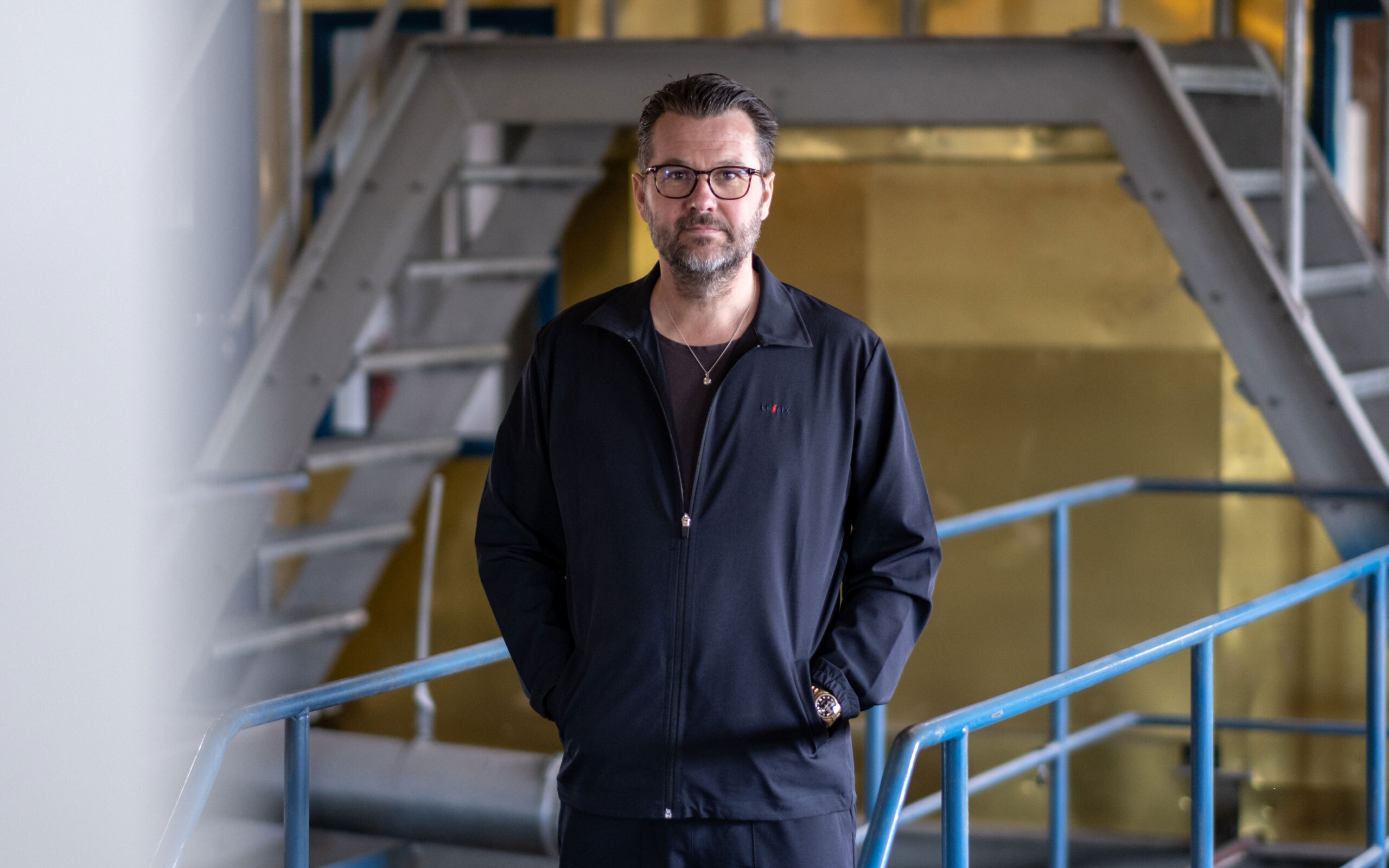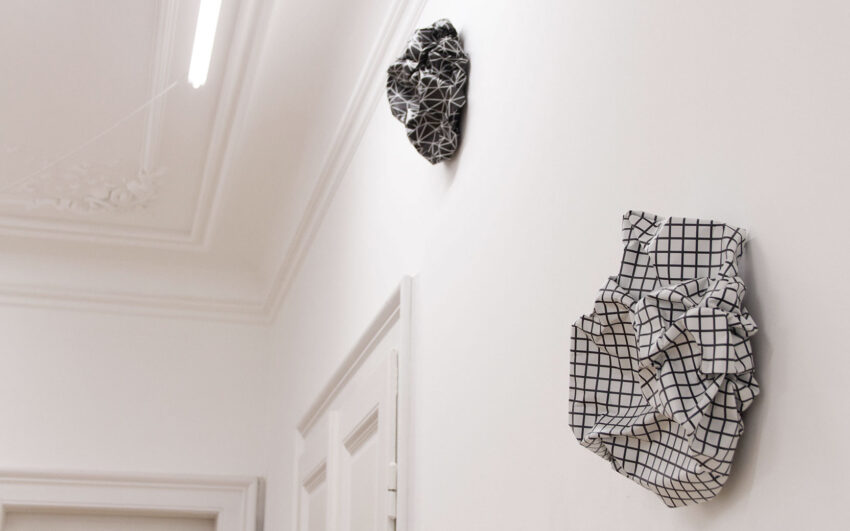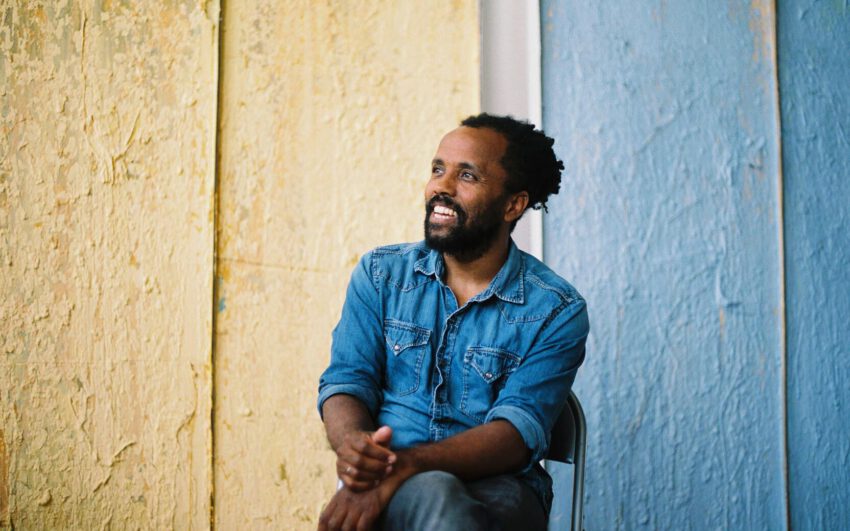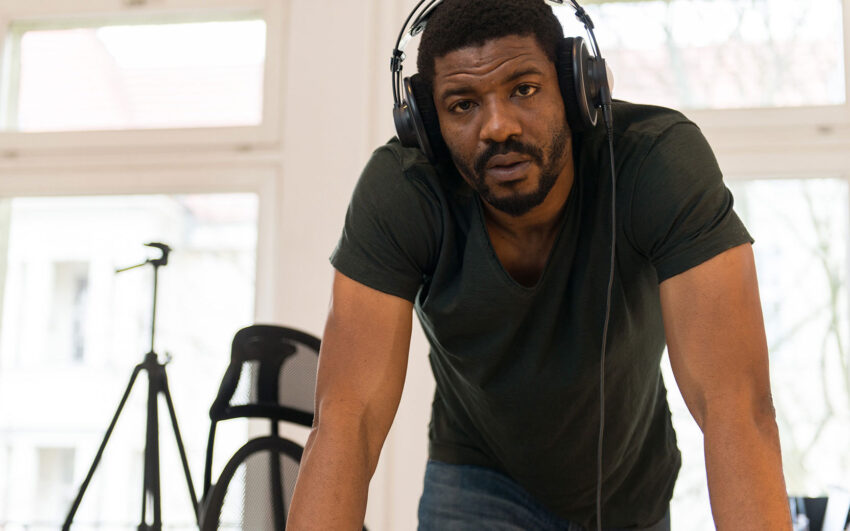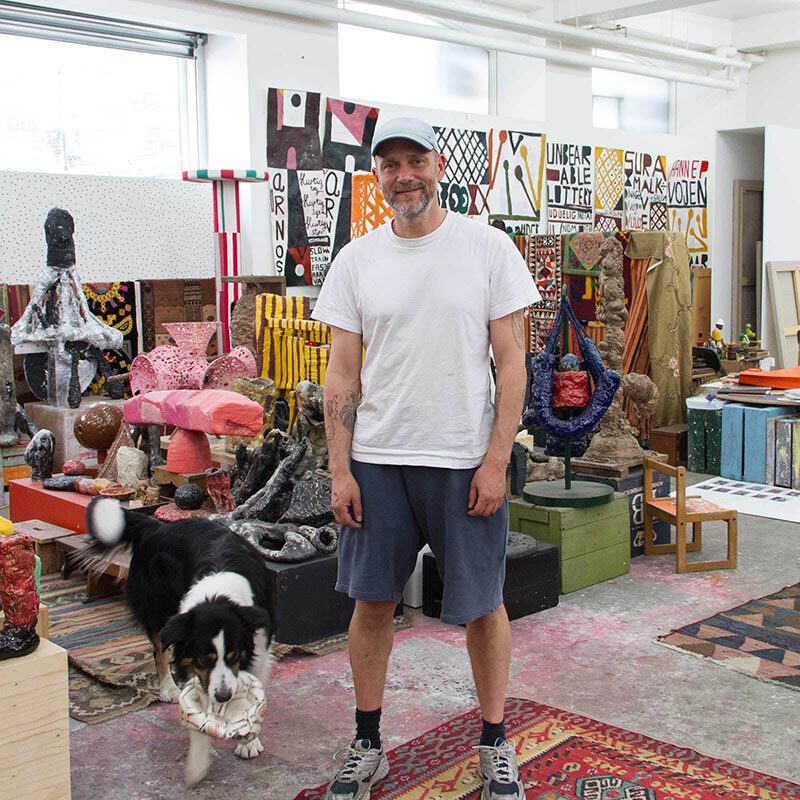The scene for contemporary art in Europe’s North is expanding and developing new dynamics as international collectors are watching the scene. With Nordic Notes we regularly cast the eye on the Nordic art and cultural scene, portraying its important actors.
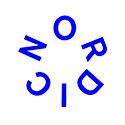
Jens-Peter Brask is a curator, publisher and passionate art collector. What began with an early fascination with graffiti as a form of artistic expression led to the fact that art has entered his life throughout. After having run a restaurant for many years the urge to invest himself more into the art world finally prevailed prompting Jens-Peter to sell his restaurant in 2015 to start working full time as a curator. Another project that has grown to his heart is to make a contribution by documenting his many visits among artists in their studio in a dedicated book series under his own publisher label.
Jens-Peter, can you recount how you first came into contact with the art world?
It began when I was very young and became interested in graffiti. At the time I was living in a town called Roskilde, about 30 minutes from Copenhagen. I was instantly drawn to this form of art because it was such a beautiful way for artists to express themselves. I was mesmerized by an artist’s unique way of effecting and creating the visual aesthetic in an urban environment. Becoming myself a graffiti painter, I met many different artists who worked with both graffiti and fine art. This started my interest in fine art and, in 1993, I acquired my first work by the Danish artist, Michael Kvium.
Has your focus been mainly on the Danish art scene?
Yes, for several years I did focus solely on Danish artists. However Nils Stærk, a gallerist who I have become close friends with, suggested I should become more aware of, and knowledgeable about, the international art scene. Nils’ advice resonated with me and, as a result, my collection is an eclectic mixture of hundreds of artists from around the world. I am really pleased with the diversity of my collection which represents some of the world’s most recognised artists as well as younger non-established ones.
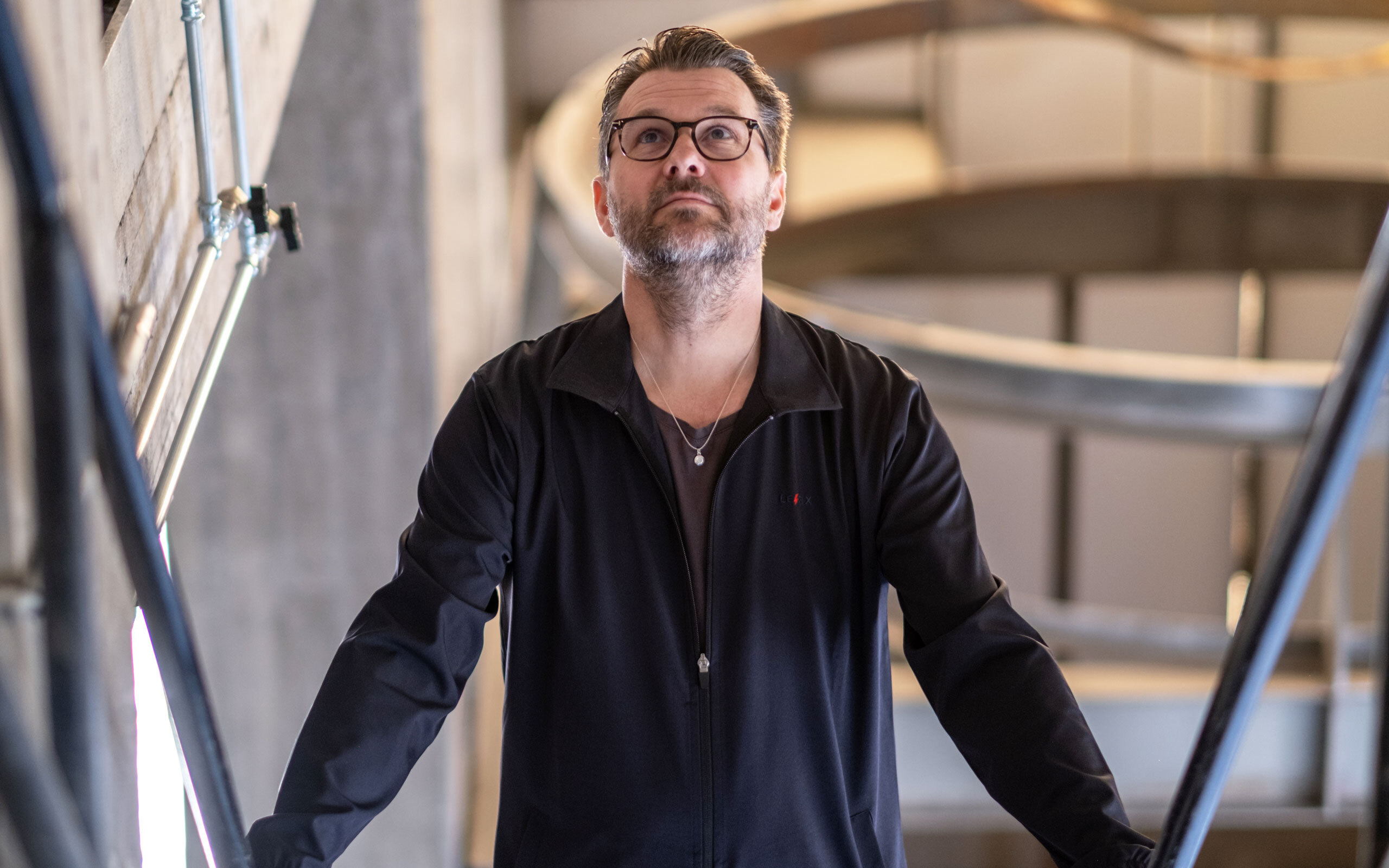
You mentioned that, during your time as a graffiti artist, you met artists who were also working in fine art. Where do you see the fringes between mural art and the art one would typically find in the white cube of a gallery?
First, there is a big difference between graffiti and street-art. Graffiti is an anonymous art form and subculture that can be both legal and illegal. Across the world, one can find legal graffiti walls – which has been my experience with graffiti. Then you have street-art, which is a very wide field and much more difficult to define. Most street art is illegal and created anonymously and is often categorized as post-graffiti. A third category is public art, where established artists create a unique work of art in the public sphere. This is often a commissioned assignment and, by that definition, it differs from the two other categories.
What does it take for art in the public domain to obtain enough credibility to be accepted by collectors?
That's a difficult one. I think there is no unique recipe for this, but it helps to be dedicated, hardworking and talented. I believe, in our postmodern reality of present times, an interesting discussion would be what categorizes an artist or an institution? It could be argued that our contemporary understanding of what classifies an artist is deeply rooted in the expansion of the concept and understanding of art. For me, mass culture has helped to remove the earlier perception of art as something elitist and inaccessible. The lines have become blurred and art is no longer something that is only available, and limited to, the established institutions.
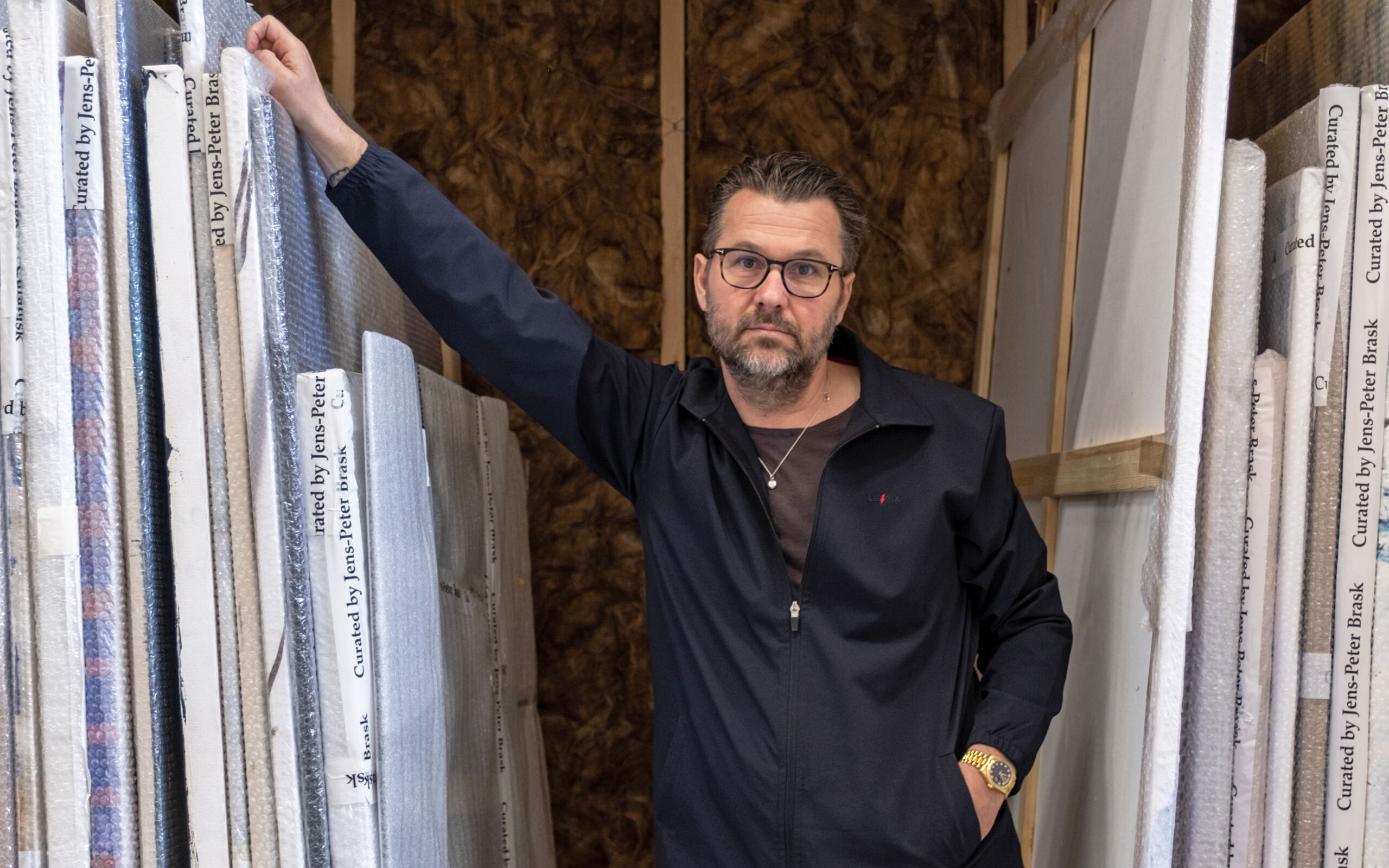
So you are saying that there is a new generation of artists who are departing from the traditional categorical patterns of the art world?
Take Banksy for example. He is literally taking art to the streets and into the consciousness of a much wider audience. As a result, I believe our generation is experiencing a powerful new wave that takes our understanding of art and shapes it into something completely new and, by doing so, we witness many contemporary artists using the urban environment as their canvas and gaining recognition from collectors and the industry.
Remembering the period when you were yourself inexperienced in the art world. What would you advise to someone new to engaging in contemporary art. How can one start finding one’s way around and enter it at a deeper level?
Get involved in the art world as much as possible: go to gallery and museum openings and talk with other visitors. It has been hugely rewarding for me to invest my time in this way and has furnished me with some very unique experiences. The more time you spend becoming acquainted with the market, the better your chances are of finding works that appeal to you the most. The most hyped or “instagrammed” artists are not necessarily the best, so it is important to take the time to get to know the market and find what speaks to you.
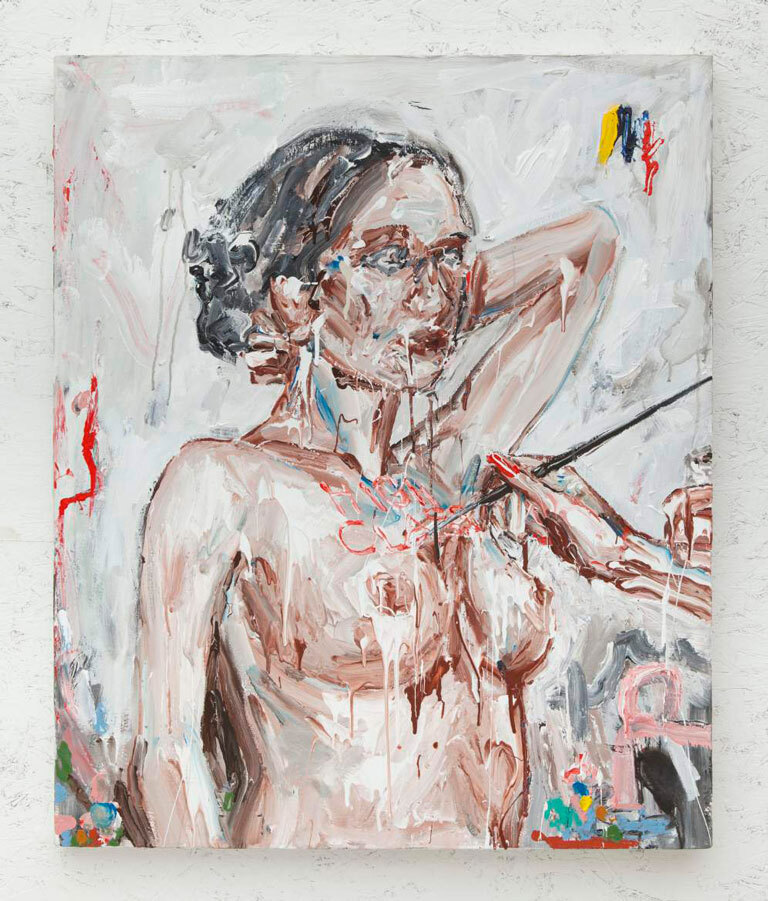
John Copeland, Untitled, 2011
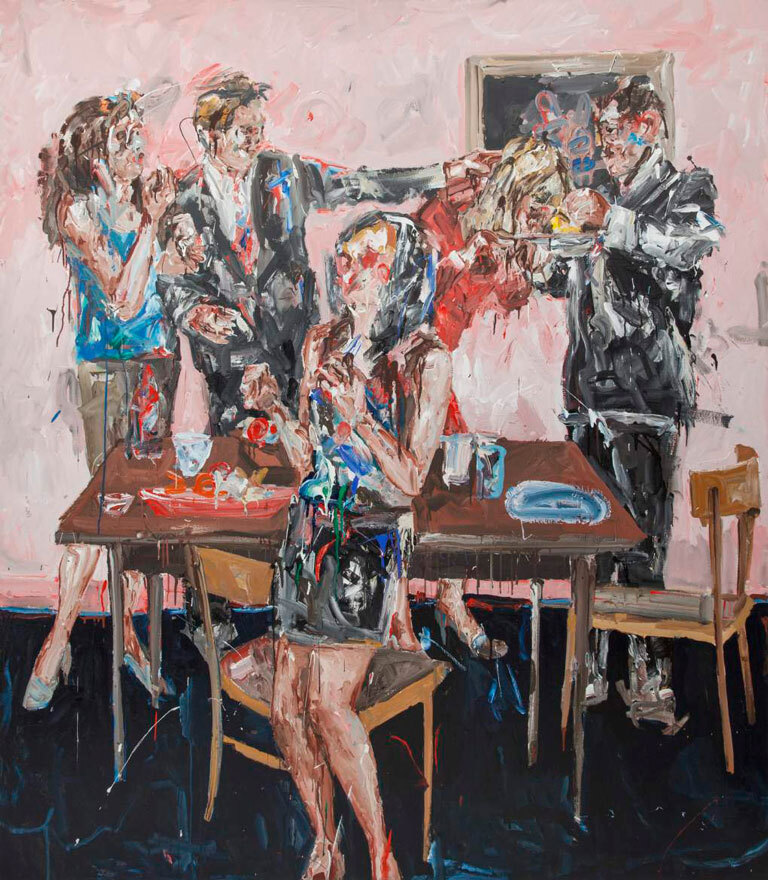
John Copeland, Untitled, 2011
Few young collectors have a big budget to start their collection. To your mind, what is a good way to start a collection of one’s own?
You can go quite far with a small budget, especially if you invest in upcoming, younger artists. This can be very rewarding, because you get the chance to support new talent at the start of their careers. Often, they are not represented by a gallery and the price level reflects that. Instagram, and other forms of social media, provide a unique exhibition platform for many upcoming artists where they can present their work to a large audience. It is exciting to be able to discover new talent and follow their career from an early stage, plus it gives you the opportunity to invest in a variety of art work for a relatively small outlay.
What parameters would you say lay the foundation of a meaningful art collection?
A collection should always be personal and a reflection of the owner. I acquire pieces that I find interesting and try, as much as possible, to avoid market speculation or overly-hyped artists. Of course, it can be difficult not to be influenced by popular trends, but it is far more challenging (and interesting) to go against the flow when building a collection. The American art collector, Hubert Neumann, for example emphasizes the importance of supporting young artists and creating a collection based on artists of the future, rather than historical ones. With the right fortune anyone can buy the most established and well-known artists from Da Vinci to Picasso, but these artists are no longer with us and I think it is far more rewarding to support living artists and help them become established. Art takes on a whole different perspective when one chooses to explore and invest in today’s talent - the very nature of collecting becomes fresher and more exciting. I would also suggest buying “fewer and bigger” rather than “more and smaller”. Ultimately, for me, it isn’t the size of a collection that matters, but the content. Less can often be more in this instance.
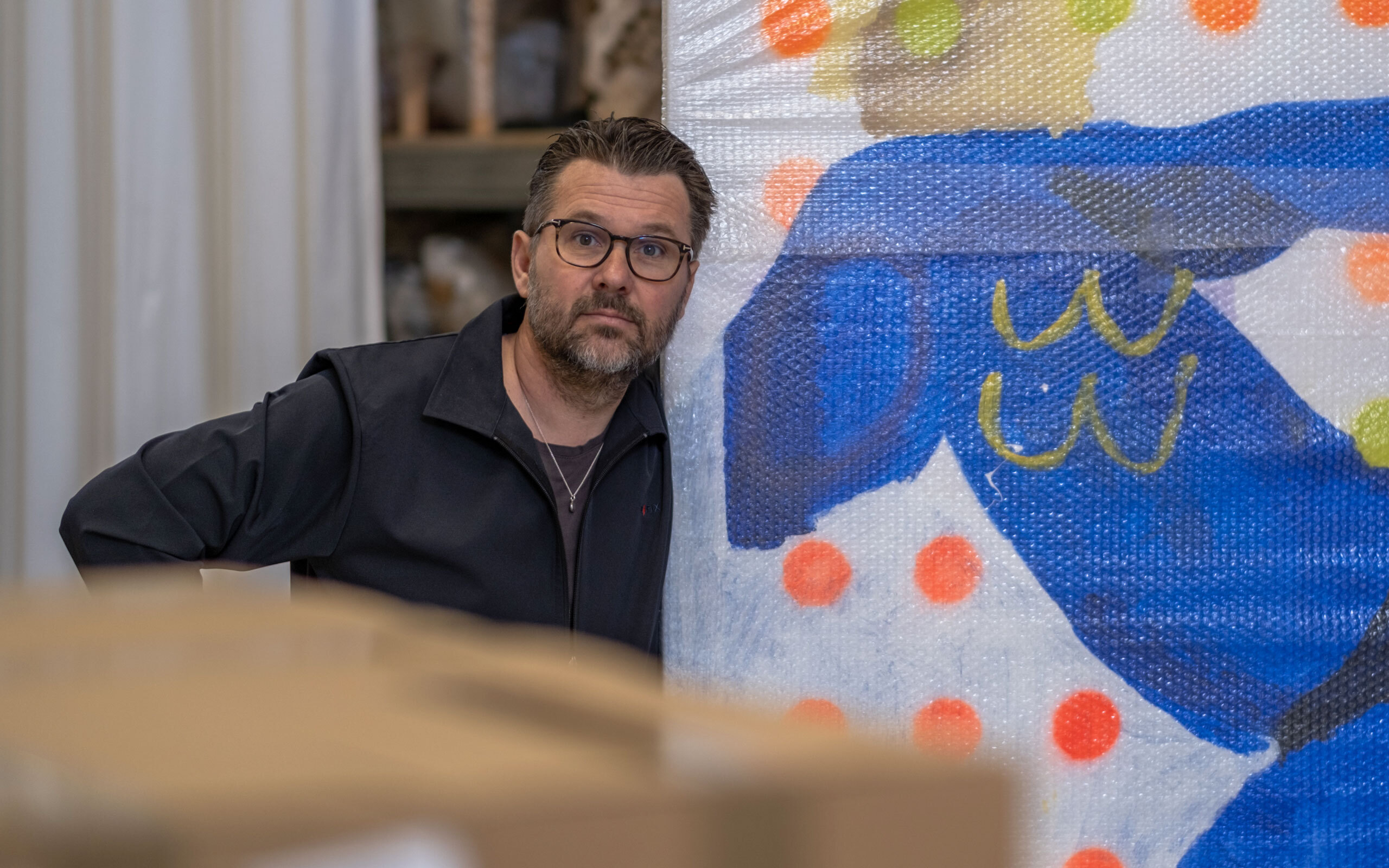
You belong yourself to a new generation of art collectors. Do you observe any differences between the habits of older collectors versus this younger generation in terms of how they seek and find art?
I think there is a big difference between the elder generation of established collectors and today’s younger generation of collectors. The older generation has a more ‘traditional’ approach to the art market and usually prefer to be physically present at galleries, auctions and art fairs when appraising or purchasing pieces. On the other hand, the younger generation can be recognized by their online presence. That said, I still believe that art is best experienced in reality (rather than ‘just’ online). However, the internet is a really useful tool that keeps me updated on new trends and upcoming artists and provides a huge and immediate audience for upcoming talent. I’m generalising here, but I think the older generation has a tendency to regard galleries as a necessary ‘seal of quality’, whereas younger collectors are more willing to approve the artists themselves. On this matter, I tend to fall between two stools: I believe it’s important to interact with the institutions who represents artists and sell their works, but I also love to be able to connect directly with the artists via the internet and social media.
What does it take for an artwork to captivate your attention?
This is closely related to my general perception of collecting art: a piece has to speak to me directly and create an almost physical reaction – a gasp that stays with me. It is like being in a relationship with someone: you want to achieve an everlasting love that will still hold your interest after many years. Art needs to have the same effect on me and I have learned to trust my own judgment. This is reflected in the way I acquire works for my collection. I have often made my decision on first glance - I just ‘know’. The Brask Collection is substantial and, inevitably, I have made some purchases that I have outgrown. That said, I have never bought a work for the collection that I have later regretted. As with so many things in life, experience has made me wiser and provided me with the kind of knowledge that can only be achieved through time, trial and error. My approach and understanding of collecting art has improved over the years, and I am grateful for every part of the journey.
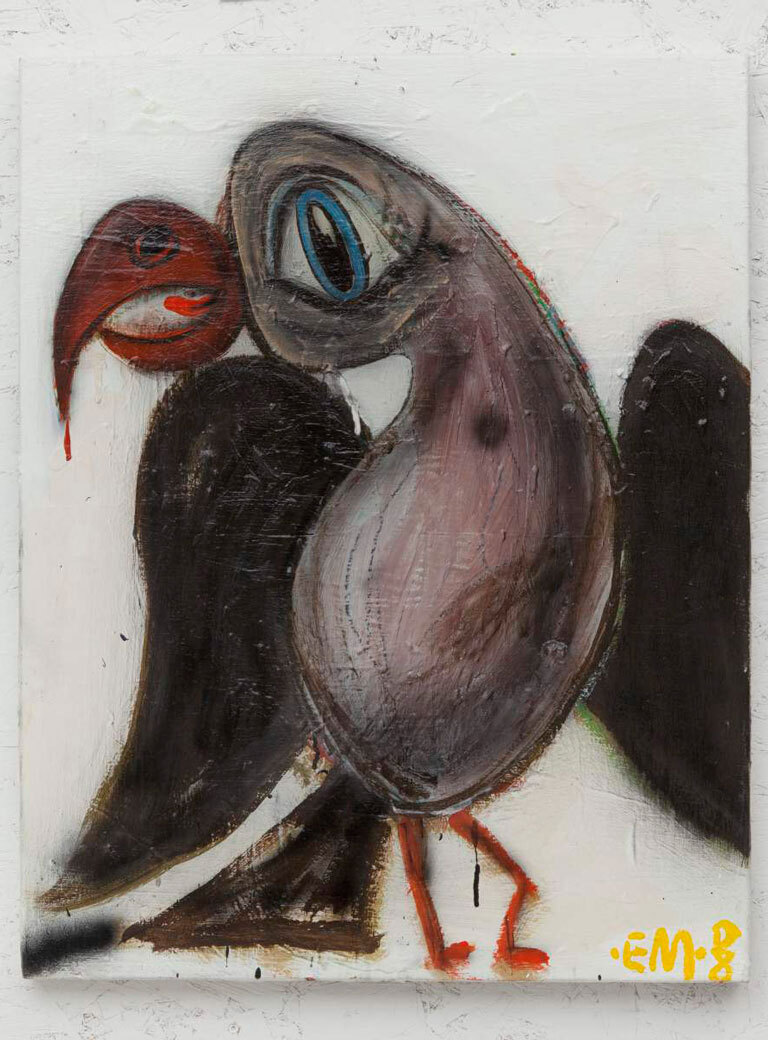
Eddi Martinez, Untitled, 2008
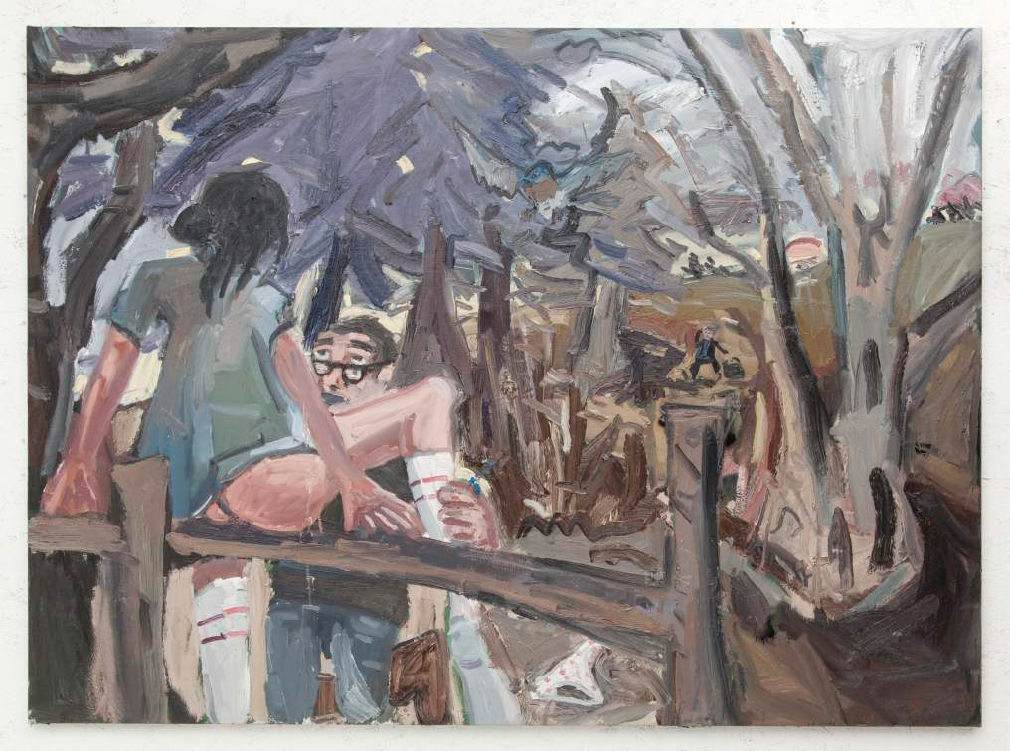
Dan Schein, Untitled, 2014
Over the years you have entered a lot of studios in your life. What do you enjoy most about conversing with artists?
The studio visits and the interaction with the artists are one of the things I cherish the most in my role as a curator and collector. An artist’s studio is a sacred place where ideas and thoughts are born and transformed into unique works. It is like being allowed ‘behind the curtain’. My interest started from my own lack of understanding about the process behind creating artworks. I was curious about the surroundings, materials, inspiration, etc. and wanted to learn more about how an artist could take the seed of an idea and grow something out of it. As a result, the art became even more interesting and personal after I had the opportunity to spend time in the studio.
Visiting artists in their studio also gave rise to a book series by you, the Brask Studio Visits.
Exactly. For the past seven years, I have published the book series Brask Studio Visits which portrays various artists in their studios. The series is published in a format that addresses art novices as well as experts and contains photographs of the various studios alongside my interview with the artists as they work – in this way, the conversation remains casual and accessible. The studio visits are something I make sure to prioritize, even during busy time periods, because it brings me so much joy and connects me to the artists. They are also especially important in my role as a curator and have given me the opportunity to create many unique collaborations. I am currently working on the seventh edition of Brask Studio Visits, that will be released in October 2021, and I am so happy to be able to continue to share my many studio visits with a wide audience.
How did the urge develop to start writing about art?
It all started in the early 90s when I was a writer on a magazine called Fantazie, in which I wrote about graffiti. In 1991-1993, I created the magazine Sneaktip with the Danish graffiti artist, Rens. This was the first magazine in Denmark (possibly in all of Scandinavia) about graffiti. In both these magazines I had a column dedicated to what was new on the graffiti scene. This was before the internet (in the sense we know it today) and we had to send each other letters with pictures enclosed. This took forever, because images needed to be developed, but it was the starting point for what I still do today which is to write about art. In 2013, I curated the exhibition DANSK GRAFFITI 1984-2013 at Kunsten Museum of Modern Art, Aalborg. In connection with the exhibition, we decided to publish a catalogue. Since then, I have published approximately 20 books under my own publishing house, Brask Publications, and I am currently working with my team to produce a number of new publications that will be released on our website.
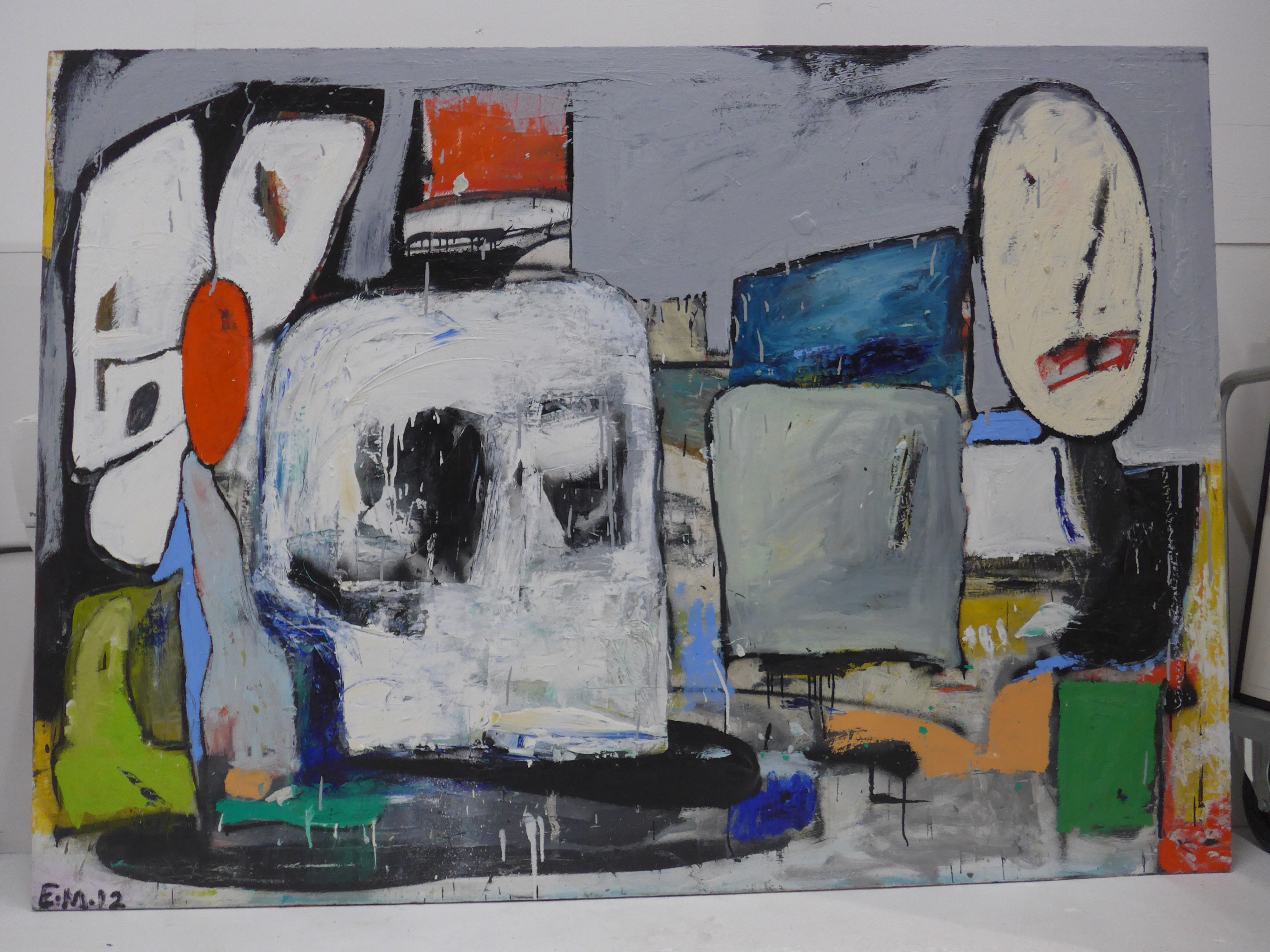
Eddie Martinez, Untitled, 2012
You mentioned that you also work as a curator. Can you speak more about your curating activities?
In my role as a curator, I work with collectors to build their portfolio and, by offering my expertise and network, help them achieve the type of collection they want. My role is therefore defined by passing on my experience and knowledge of acquiring specific art pieces that build and shape a collection, rather than advising on art in a general way. Some of the collectors I work with buy one painting a year and others acquire several a month. It is therefore important to establish personal connections with the many collectors I meet to ensure that I learn to understand their taste and habits better than they do themselves. It is so rewarding to introduce collectors to new artists or to help them to realize their dream of owning works by specific artists. I would never convince anyone to take on a work they don’t like. However, as it turns out, they are often grateful for the ‘introduction’ and happy that they went in a new and unexpected direction. I love working with so many enthusiastic collectors and always look forward to discussing art with them.
Can you call out the name of one artist whose work has made a lasting impact on the way how art has entered your life?
Obviously Danish artist Michael Kvium who was the first artist I acquired a work by, so he kind of set the beginning of The Brask Collection. I didn't know Kvium personally at the time. I only knew off his work, but I feel lucky to now be able to describe him as one of my close friends. He is an extraordinary person with a big heart, and I consider him to be one of the biggest talents of our time. Then I have always been captivated by Dan Schein's work. It is fascinating how he portrays the underlying nature and desire of mankind. Another important artist in the collection is the American artist Eddie Martinez. Eddie is one of those artists whose talent is so obvious. His works are vivid, raw, and poetical all at the same time, and I always like to be around his works, which is probably the most important thing if one chooses to live with art.
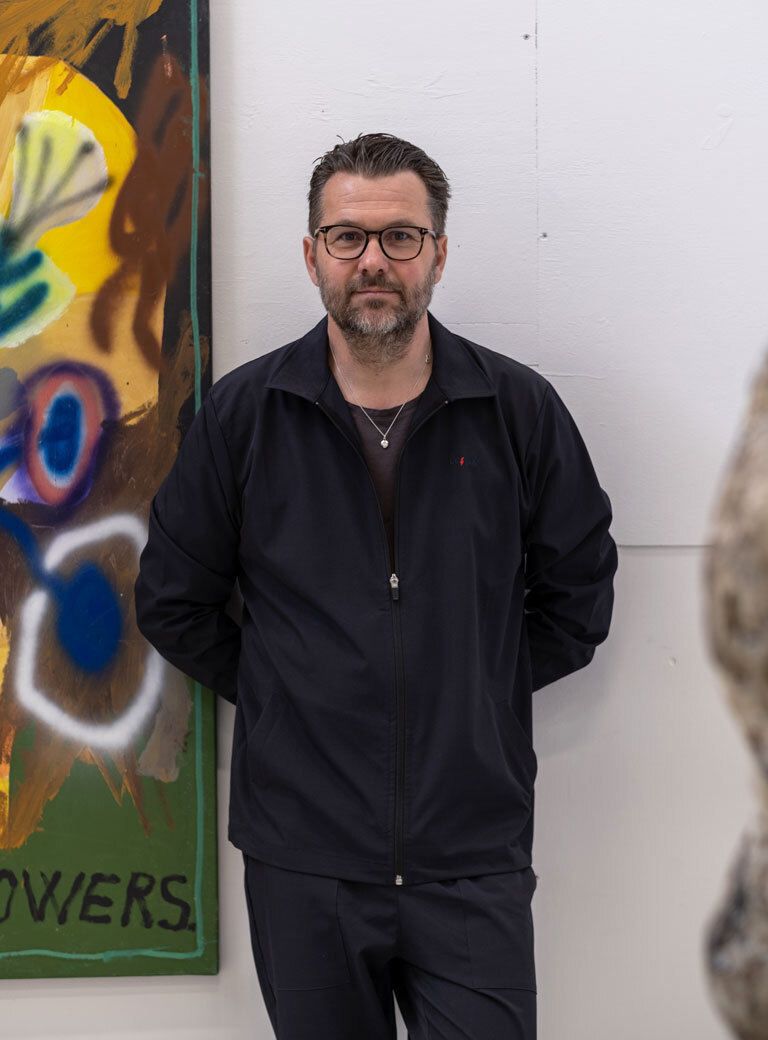
Text: Florian Langhammer
Photos: Mads Guldager, Courtesy of Jens-Peter Brask
Links:


